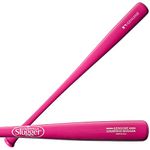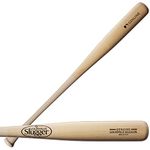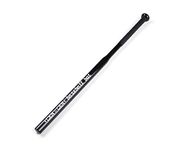10 bestWood Baseball Batsof December 2025
112M consumers helped this year.
1

Mizuno Bamboo Classic - MZB 243 32" Black
Mizuno

10.0
2

Louisville Slugger Genuine Mix Black Baseball Bat - 32
Louisville Slugger

10.0
3
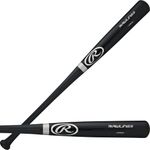
Adirondack Wood Black, Signature Model: R212AB-34, 34"
Rawlings

9.9
4
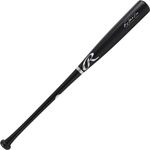
Rawlings | Big Stick Elite Wood Baseball Bat | 243 Profile | Maple - 34"
Rawlings

9.7
5

Rawlings Adirondack Baseball Bat, 34"
Rawlings

9.6
OtherUp to 5% off
6

Mizuno Bamboo Classic - MZB 62 33" Black - Cherry
Mizuno

9.4
7

Marucci - AP5 PRO Model Brown/Black (MVE3AP5-BR/BK-32)
Marucci

9.2
8

Player Preferred 271 Ash Wood Baseball Bat, 33 inch
Rawlings

8.9
9
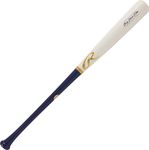
Rawlings | Big Stick Elite Wood Baseball Bat | 110 Profile | Birch - 33"
Rawlings

8.7
10

Mizuno Pro Select MZM 271 Maple Wood Baseball Bat, Multi, One Size, 340632.9090.16.3200
Mizuno

8.5
A Guide to Selecting the Best Wood Baseball Bats
Choosing the right wood baseball bat is all about matching the bat to your playing style, skill level, and personal preferences. Wood bats come in different types, sizes, and shapes, each affecting how the bat feels and performs. Understanding the key features will help you find a bat that feels comfortable in your hands, helps you swing confidently, and suits the level of play you’re involved in.
Wood Type
The type of wood used in a baseball bat affects its durability, weight, and performance. Common woods include ash, maple, and birch. Ash bats are known for their flexibility and lighter weight, making them easier to swing and good for players who value bat speed. Maple bats are denser and harder, offering more power but less flex, which can be great for strong hitters. Birch bats offer a balance between ash and maple, combining some flex with good hardness. To pick the right wood, consider your hitting style: if you like a lighter, more forgiving bat, ash or birch may be best; if you want maximum power and durability, maple could be the way to go.
Length
Bat length is measured in inches and typically ranges from 30 to 34 inches for adult players. A longer bat gives you more reach but can be harder to control, while a shorter bat is easier to handle but offers less plate coverage. To choose the right length, think about your height, strength, and comfort. Taller or stronger players might prefer a longer bat, while those who value quick swings and control may opt for a shorter one. The best way to decide is to try swinging different lengths and see which feels most natural.
Weight
The weight of a wood bat is usually listed in ounces and is closely related to its length. Heavier bats can generate more power but require more strength to swing, while lighter bats are easier to control and allow for faster swings. The right weight depends on your strength and hitting style: power hitters might choose a heavier bat for more impact, while contact hitters often prefer lighter bats for better bat speed. Try swinging bats of different weights to find one that you can swing comfortably and quickly.
Barrel Size
The barrel is the thickest part of the bat and is where you want to make contact with the ball. Larger barrels have a bigger sweet spot, making it easier to hit the ball well, but they can also make the bat heavier and harder to control. Smaller barrels are lighter and easier to swing but have a smaller sweet spot. If you’re new to wood bats or want more forgiveness, a larger barrel might be helpful. If you prioritize bat speed and control, a smaller barrel could be a better fit.
Handle Thickness
Handle thickness affects how the bat feels in your hands and how much control you have. Thicker handles can reduce vibration and are less likely to break, but they may feel bulky and slow down your swing. Thinner handles allow for quicker wrist action and faster swings but can be less forgiving on mishits. If you have strong hands and want more durability, a thicker handle might suit you. If you prefer a lighter feel and quick swings, a thinner handle could be ideal.
Balance (End-Loaded vs. Balanced)
Balance refers to how the weight is distributed along the bat. Balanced bats have their weight evenly spread, making them easier to control and swing quickly. End-loaded bats have more weight toward the barrel, which can help generate more power but may be harder to handle. If you’re a contact hitter or value bat speed, a balanced bat is usually best. If you’re a power hitter looking to drive the ball farther, an end-loaded bat might be the right choice.
Finish and Grip
The finish and grip of a wood bat can affect how it feels and how well you can hold onto it. Some bats have a glossy finish, while others are matte or unfinished. A tacky or textured grip can help prevent slipping, especially in sweaty conditions. If you play in humid or wet environments, or if you want extra control, look for a bat with a good grip or consider adding grip tape. The finish is mostly about personal preference, but a comfortable grip is important for consistent performance.
Best Reviews Guide Newsletter
Get exclusive articles, recommendations, shopping tips, and sales alerts
Sign up for our newsletter to receive weekly recommendations about seasonal and trendy products
Thank you for subscribing!
By submitting your email address you agree to our Terms and Conditions and Privacy Policy
